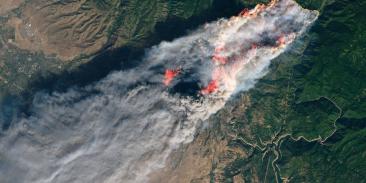Dayton Gets 'D' Grade For Transportation Network
Environmental Defense, Ohio Citizen Action, and the Ohio Chapter of the Sierra Club today announced that the Dayton metropolitan area’s transportation network received a grade of D in their environmental livability study. The poor grade reflects the fact that the Dayton area has a higher density of roadways than many similar cities, and less than one transit seat per person.
“Dayton is road focused,” said Jane Forrest Redfern of Ohio Citizen Action. “Unless our area reduces its dependence on cars, quality of life will decline. The region is already in danger of violating the federal government’s health standards for ozone smog levels, yet we are still planning major new roads.”
The study (available here) also finds
- At 27.4 vehicle miles traveled per person, the Dayton area ranks 12th among 65 metropolitan areas with populations above 500,000, making it one of the most dependent on motor vehicles. Dayton’s population travels more miles per capita than Chicago, Cleveland or Milwaukee.
- Dayton has over five miles of paved roadway per 1,000 people, more than other US cities with similar populations, including Milwaukee, Cleveland and Minneapolis. The expansion of I-75 and the building of Ohio 892, which are now under consideration, would further increase Dayton’s dependence on motor vehicles.
“Driving is often a person’s most polluting daily activity,” said Carol Andress, an economic specialist with Environmental Defense. “Vehicle exhaust is the biggest contributor to unhealthy air in our cities; roads dirty our water with polluted runoff, and urban sprawl takes away our open spaces.”
“We need to develop alternatives to driving so that we can leave our children a clean, healthy environment,” said Marc Conte with Sierra Club’s Ohio Chapter.
On the upside, the study points out that the Dayton metro area is one of only five US cities with electric trolley buses, which have significantly lower emissions than conventional diesel buses. Dayton also has a sales tax to support the bus system, electronic trolleys, rideshare and biking programs. Despite these programs, the study finds Dayton continues to focus on adding new roads.
With more than 3 million members, Environmental Defense Fund creates transformational solutions to the most serious environmental problems. To do so, EDF links science, economics, law, and innovative private-sector partnerships to turn solutions into action. edf.org
Latest press releases
-
New Poll: Republicans, Democrats and Independents Strongly Oppose Weakening Chemical Safety Law
October 27, 2025 -
Court Rules New York Must Implement State Climate Law and Deliver Swift Action
October 24, 2025 -
EDF Goes to Court to Help Defend California Climate Risk Reporting Laws That Protect People from Financial Damage
October 24, 2025 -
Oregon Water Partnership Applauds Gov. Kotek’s Executive Order to Promote Resilience of Communities and Natural Working Lands and Waters
October 23, 2025 -
Community, Health and Environmental Groups Sue to Stop President Trump’s Unlawful Toxic Air Pollution Exemptions
October 22, 2025 -
Emerging Farm Resiliency Practice Provides Significant Farm-Level and Public Benefits, New Report from EDF
October 21, 2025










